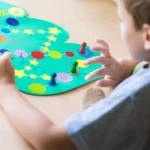Every parent has experienced it — you’re in the middle of a supermarket trip, and your 2-year-old suddenly drops to the floor, crying, screaming, and refusing to move. These outbursts, known as toddler tantrums, are common between the ages of 2 and 3. While they can be stressful, tantrums are actually a normal part of child development.
This guide will help you understand why tantrums happen, how to prevent them, and what you can do to calm your child when emotions run high.
Why Do 2–3 Year Olds Have Tantrums?
At this stage, toddlers are developing independence, but their language skills and emotional control aren’t fully formed yet. This creates a gap between what they want to express and what they can actually communicate.
Common triggers include:
- Frustration (can’t get a toy to work, can’t explain what they want)
- Hunger or tiredness
- Changes in routine
- Overstimulation (too much noise, crowd, or activity)
- Seeking attention
Prevention: Reducing the Chances of Tantrums
While you can’t stop every tantrum, you can reduce their frequency:
1. Stick to a Routine
Predictable schedules help toddlers feel safe and reduce anxiety.
2. Offer Choices
Give small, age-appropriate options like, “Do you want the red cup or the blue cup?”
3. Watch for Early Signs
Address hunger, tiredness, or boredom before they escalate.
4. Keep Instructions Simple
Short, clear sentences work best for young children.
How to Handle a Tantrum Calmly
When a tantrum starts, your reaction can make a huge difference.
- Stay calm – Yelling back fuels the behavior. Speak softly but firmly.
- Ensure safety – If your child is thrashing, move dangerous objects away.
- Ignore when possible – For attention-seeking tantrums, sometimes the best approach is not giving the reaction they expect.
- Acknowledge feelings – Say things like, “I see you’re upset because you can’t have the toy right now.”
- Wait it out – Tantrums usually pass in a few minutes once emotions settle.
After the Tantrum: Teach Emotional Skills
Once calm, help your child learn better ways to express themselves:
- Practice naming feelings (“You’re sad,” “You’re angry”).
- Use role play to model polite requests.
- Praise them when they handle frustration well.
When to Seek Professional Help
Tantrums are normal, but consider talking to a pediatrician or child development expert if:
- Tantrums happen multiple times daily for long periods
- Your child injures themselves or others
- You notice delays in speech or social interaction
Caution for Parents
Never use physical punishment during tantrums. It can damage trust and make behavior worse. Instead, focus on patience, consistency, and positive reinforcement.
HealthyChildren.org – Temper Tantrums
Raising Children Network – Tantrums: Why They Happen and How to Respond











